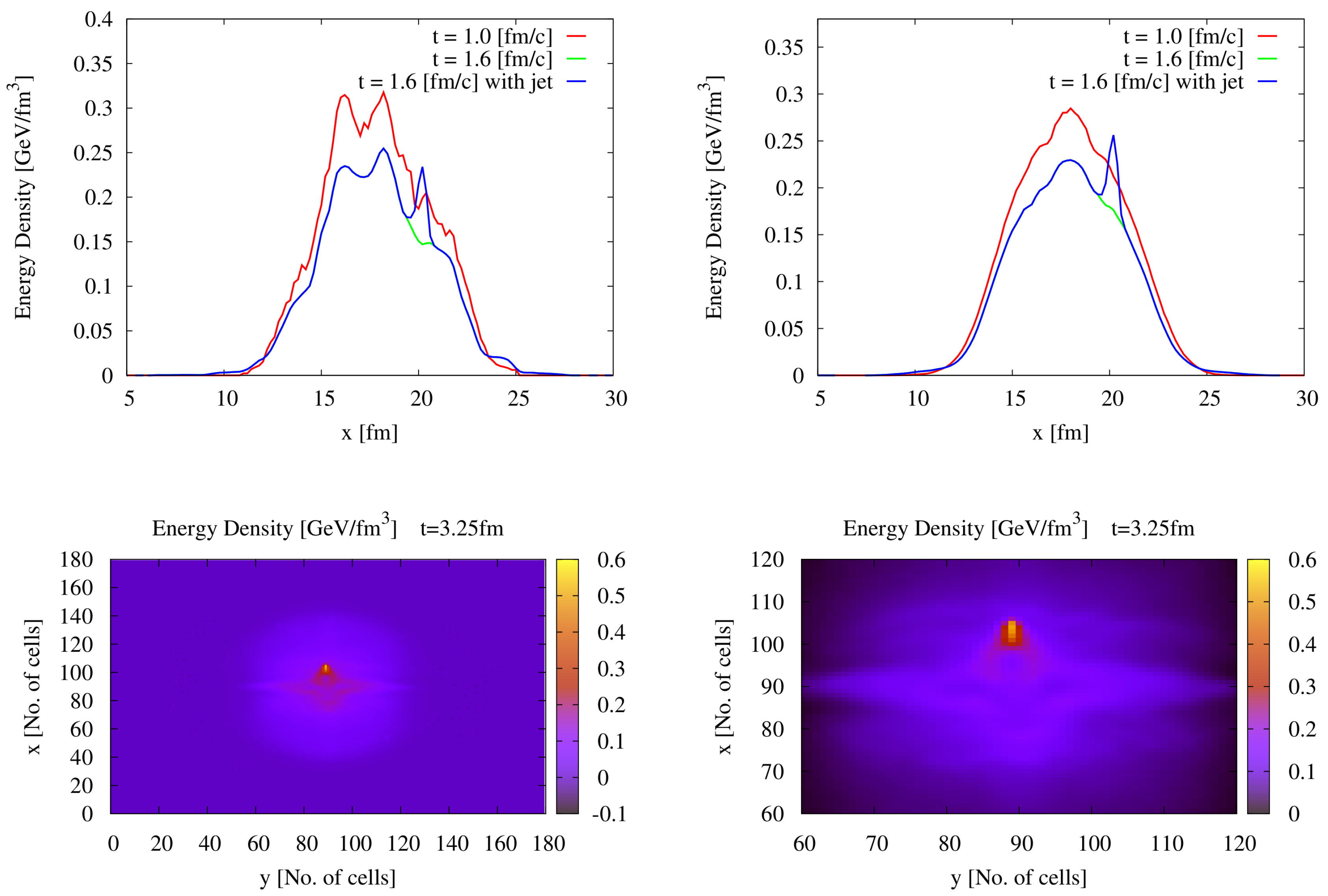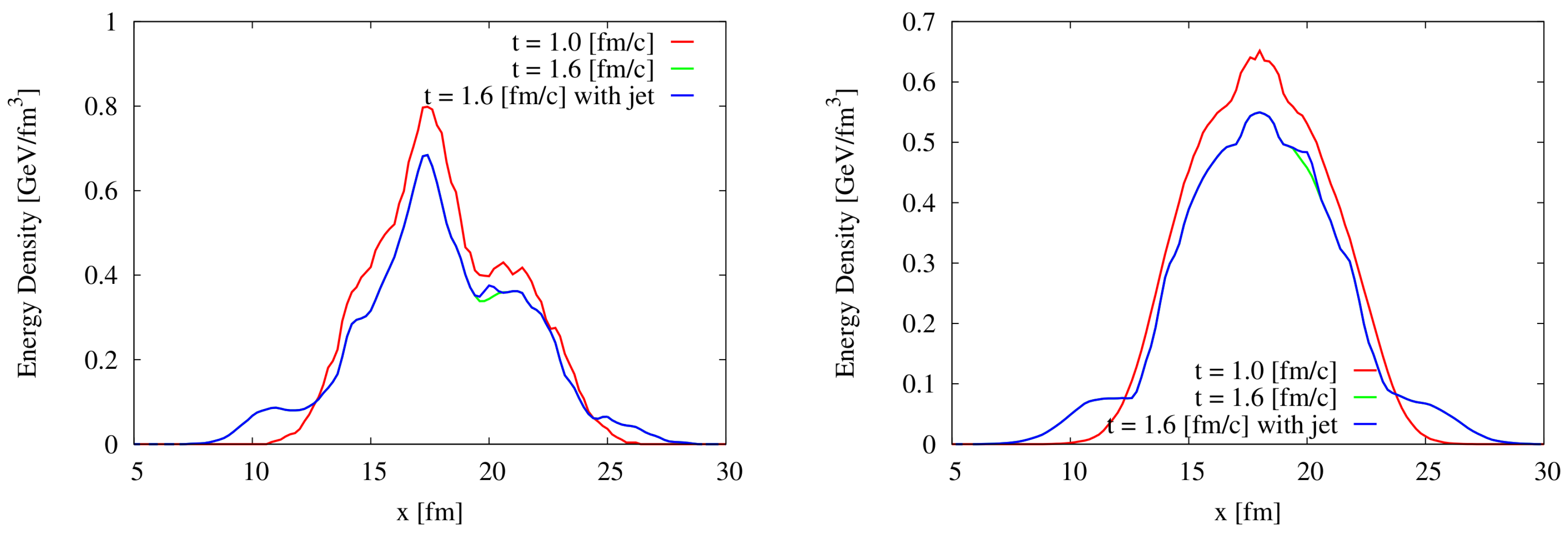Simulations of Energy Losses in the Bulk Nuclear Medium Using Hydrodynamics on the Graphics Cards (GPU) †
Abstract
:1. Introduction
2. Applied Methods
3. Results
4. Discussion
Author Contributions
Funding
Acknowledgments
Conflicts of Interest
References
- Shu, C.W. High order finite difference and finite volume weno schemes anddiscontinuous galerkin methods for cfd. Int. J. Comput. Fluid Dyn. 2001, 17, 107–118. [Google Scholar] [CrossRef]
- Casalderrey-Solana, J.; Gulhan, D.C.; Milhano, J.G.; Pablos, D.; Rajagopal, K. Comments on Entanglement Negativity in Holographic Field Theories. J. High Energy Phys. 2014. [Google Scholar] [CrossRef]
- Sikorski, J.; Cygert, S.; Porter-Sobieraj, J.; Słodkowski, M.; Krzyżanowski, P.; Ksia̧żek, N.; Duda, P. Relativistic hydrodynamics on graphics processing units. J. Phys. Conf. Ser. 2014, 509, 012059. [Google Scholar] [CrossRef]
- Bass, S.A. Microscopic models for ultrarelativistic heavy ion collisions. Prog. Part. Nucl. Phys. 1998, 41, 255. [Google Scholar] [CrossRef]
- Słodkowski, M.; Marcinkowski, P.; Gawryszewski, P.; Kikoła, D.; Porter-Sobieraj, J. Modeling of modifications induced by jets in the relativistic bulk nuclear matter. J. Phys. Conf. Ser. 2018, 1085, 052001. [Google Scholar] [CrossRef]


Publisher’s Note: MDPI stays neutral with regard to jurisdictional claims in published maps and institutional affiliations. |
© 2019 by the authors. Licensee MDPI, Basel, Switzerland. This article is an open access article distributed under the terms and conditions of the Creative Commons Attribution (CC BY) license (https://creativecommons.org/licenses/by/4.0/).
Share and Cite
Słodkowski, M.; Gawryszewski, P.; Marcinkowski, P.; Setniewski, D.; Porter-Sobieraj, J. Simulations of Energy Losses in the Bulk Nuclear Medium Using Hydrodynamics on the Graphics Cards (GPU). Proceedings 2019, 10, 27. https://doi.org/10.3390/proceedings2019010027
Słodkowski M, Gawryszewski P, Marcinkowski P, Setniewski D, Porter-Sobieraj J. Simulations of Energy Losses in the Bulk Nuclear Medium Using Hydrodynamics on the Graphics Cards (GPU). Proceedings. 2019; 10(1):27. https://doi.org/10.3390/proceedings2019010027
Chicago/Turabian StyleSłodkowski, Marcin, Patryk Gawryszewski, Patryk Marcinkowski, Dominik Setniewski, and Joanna Porter-Sobieraj. 2019. "Simulations of Energy Losses in the Bulk Nuclear Medium Using Hydrodynamics on the Graphics Cards (GPU)" Proceedings 10, no. 1: 27. https://doi.org/10.3390/proceedings2019010027
APA StyleSłodkowski, M., Gawryszewski, P., Marcinkowski, P., Setniewski, D., & Porter-Sobieraj, J. (2019). Simulations of Energy Losses in the Bulk Nuclear Medium Using Hydrodynamics on the Graphics Cards (GPU). Proceedings, 10(1), 27. https://doi.org/10.3390/proceedings2019010027




